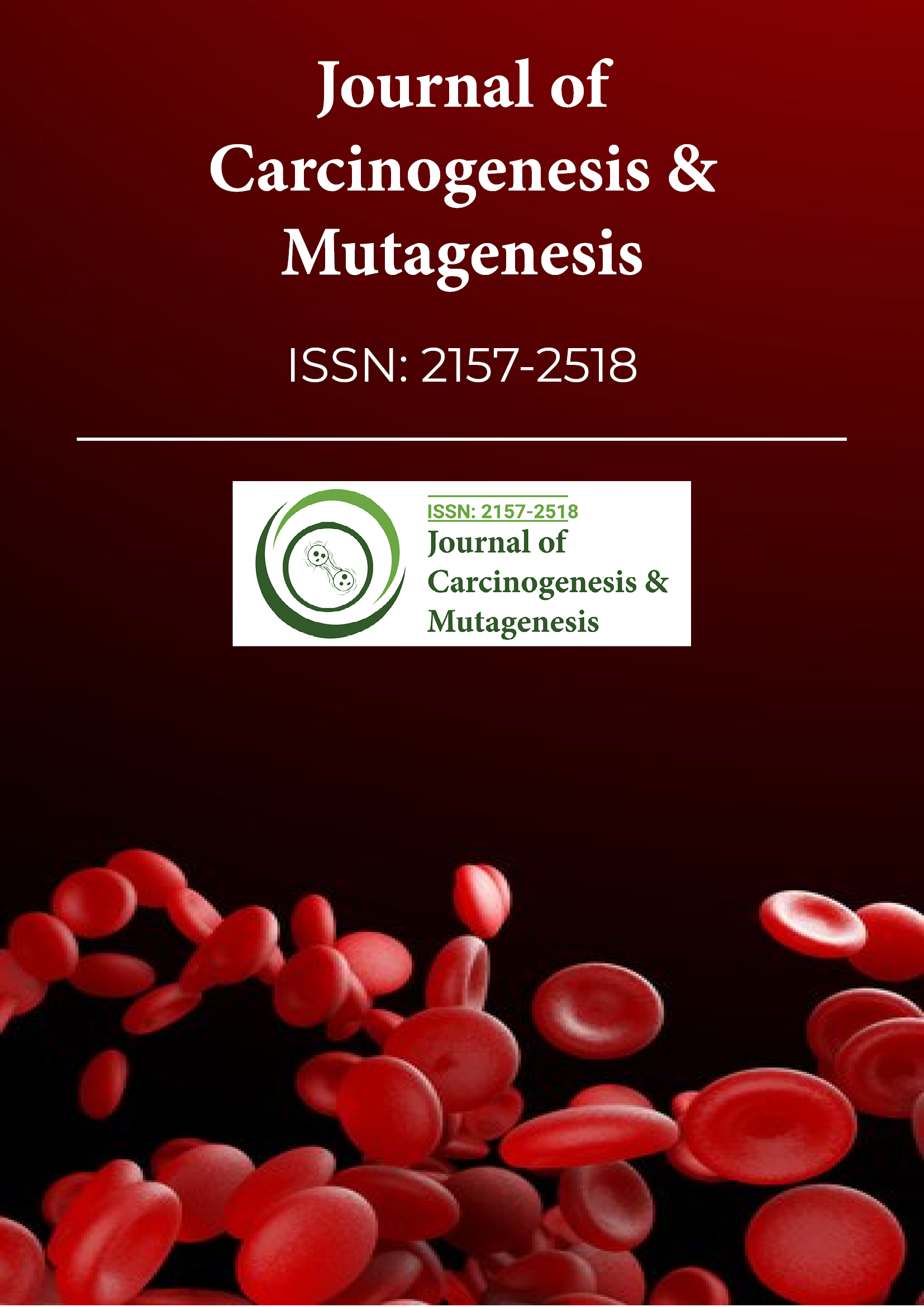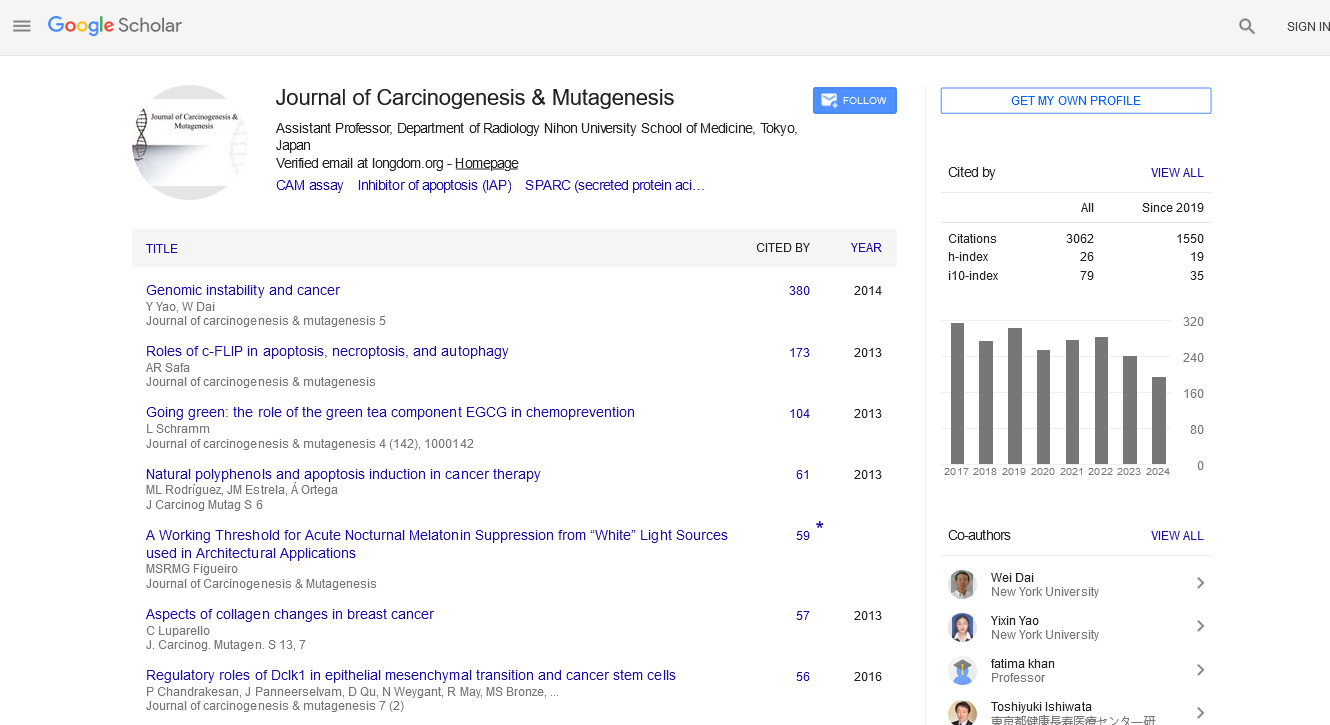Indexed In
- Open J Gate
- Genamics JournalSeek
- JournalTOCs
- Ulrich's Periodicals Directory
- RefSeek
- Hamdard University
- EBSCO A-Z
- OCLC- WorldCat
- Publons
- Geneva Foundation for Medical Education and Research
- Euro Pub
- Google Scholar
Useful Links
Share This Page
Journal Flyer

Open Access Journals
- Agri and Aquaculture
- Biochemistry
- Bioinformatics & Systems Biology
- Business & Management
- Chemistry
- Clinical Sciences
- Engineering
- Food & Nutrition
- General Science
- Genetics & Molecular Biology
- Immunology & Microbiology
- Medical Sciences
- Neuroscience & Psychology
- Nursing & Health Care
- Pharmaceutical Sciences
Opinion - (2025) Volume 16, Issue 3
Insights into the Development and Treatment of Ductal Adenocarcinoma
Lihua Cao Department of Interventional Radiology, Jining No. 1 People’s Hospital, Jining*Received: 31-May-2025, Manuscript No. JCM-25-29463; Editor assigned: 02-Jun-2025, Pre QC No. JCM-25-29463 (PQ); Reviewed: 16-Jun-2025, QC No. JCM-25-29463; Revised: 23-Jun-2025, Manuscript No. JCM-25-29463 (R); Published: 30-Jun-2025, DOI: 10.35248/2157-2518.25.16.478
Description
Ductal adenocarcinoma is a highly aggressive malignancy that arises from the epithelial cells lining the ducts of various glandular organs, most commonly the pancreas, prostate, and breast. Among these, Pancreatic Ductal Adenocarcinoma (PDAC) stands out due to its extremely poor prognosis and rising global incidence. Despite significant advancements in cancer research, ductal adenocarcinomas continue to present major clinical challenges due to late-stage diagnosis, limited therapeutic options, and high metastatic potential.
The pathogenesis of ductal adenocarcinoma is complex and involves a multistep process driven by genetic mutations, epigenetic alterations, and changes in the tumor microenvironment. In pancreatic cancer, for example, key driver mutations include KRAS, TP53, CDKN2A, and SMAD4. These mutations contribute to uncontrolled cell proliferation, resistance to apoptosis, and enhanced invasiveness. Similarly, in ductal prostate adenocarcinoma, alterations in the PTEN and FOXA1 genes have been implicated. Chronic inflammation, environmental carcinogens, and hereditary syndromes such as BRCA1/2 mutations also play important roles in the carcinogenesis of ductal malignancies.
Clinically, ductal adenocarcinomas are often asymptomatic in their early stages. Symptoms, when present, tend to be nonspecific, which contributes to delayed diagnosis. In pancreatic ductal adenocarcinoma, symptoms such as jaundice, weight loss, and abdominal pain typically appear only after the disease has advanced. Prostate ductal adenocarcinoma may present with hematuria or urinary obstruction, often mistaken for benign prostatic hyperplasia. These overlapping symptoms with benign or less aggressive conditions underscore the need for more precise diagnostic tools.
Diagnostic evaluation typically includes imaging studies, histopathological examination, and biomarker testing. Endoscopic ultrasound, MRI, and CT scans play important roles in tumor localization and staging. Histologically, ductal adenocarcinomas exhibit glandular formations with varying degrees of cellular atypia and desmoplastic stromal response. Immunohistochemical markers such as CK7, CK20, CA19-9 (in PDAC), and PSA (in prostate cancer) aid in confirming the diagnosis and determining tissue origin.
Current treatment strategies for ductal adenocarcinoma vary based on tumor site, stage, and patient condition. Surgical resection remains the primary curative option, but only a minority of patients are eligible due to advanced disease at diagnosis. Adjuvant and neoadjuvant chemotherapy regimens, including FOLFIRINOX and gemcitabine-based therapies, have shown improved survival outcomes in pancreatic cancer. Targeted therapies and immunotherapy are under active investigation, but their effectiveness in ductal carcinomas remains limited due to the immunosuppressive tumor microenvironment and low mutational burden. For prostate ductal adenocarcinoma, treatment may include radical prostatectomy, radiation, and androgen deprivation therapy, although outcomes tend to be poorer compared to acinar adenocarcinoma.
Recent research has focused on molecular profiling and biomarker discovery to enhance early detection and personalize therapy. Liquid biopsies, circulating tumor DNA, and exosomal markers are promising tools for non-invasive diagnosis and monitoring. Furthermore, organoid models and patient-derived xenografts are revolutionizing preclinical studies by closely mimicking human tumor biology, thus facilitating drug screening and functional genomics.
In conclusion, ductal adenocarcinoma represents a formidable challenge in oncology due to its aggressive behavior and resistance to conventional therapies. Ongoing efforts in understanding its molecular underpinnings and improving clinical management are important to reduce mortality and improve quality of life for affected patients. The Journal of Carcinogenesis & Mutagenesis remains an essential platform for disseminating innovative research in this critical area of cancer biology.
Citation: Cao L. (2025). Insights into the Development and Treatment of Ductal Adenocarcinoma. J Carcinog Mutagen. 16:478
Copyright: © 2025 Cao L. This is an open-access article distributed under the terms of the Creative Commons Attribution License, which permits unrestricted use, distribution, and reproduction in any medium, provided the original author and source are credited


